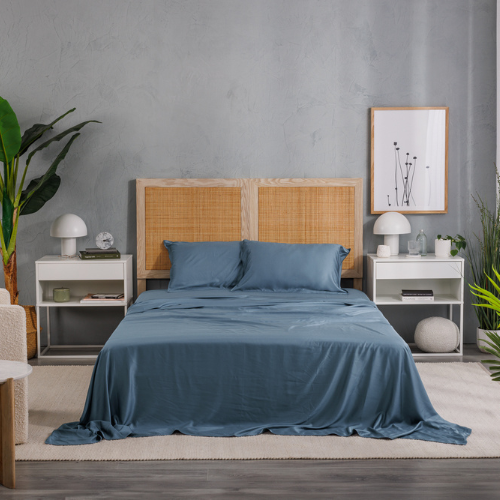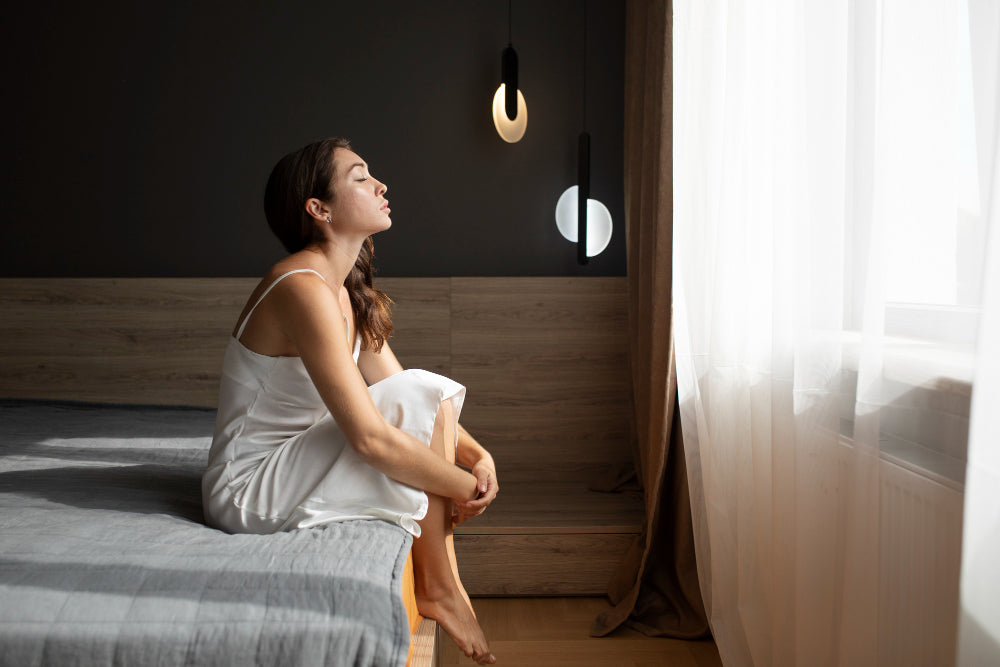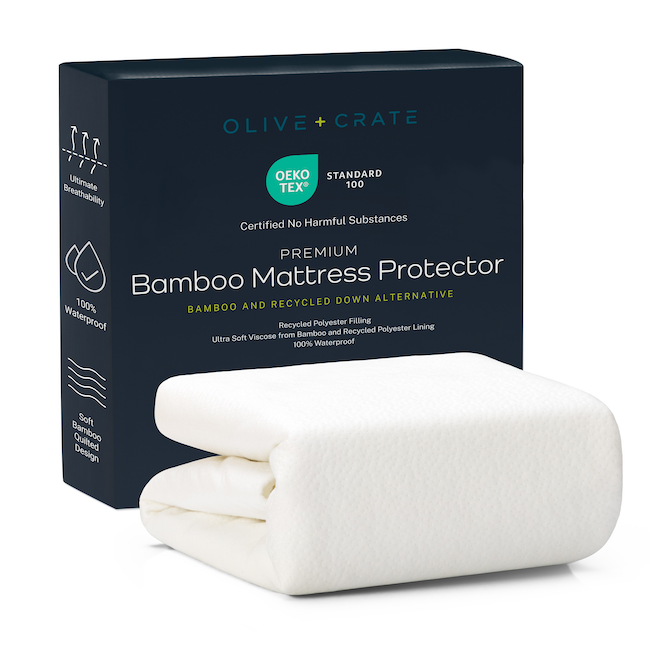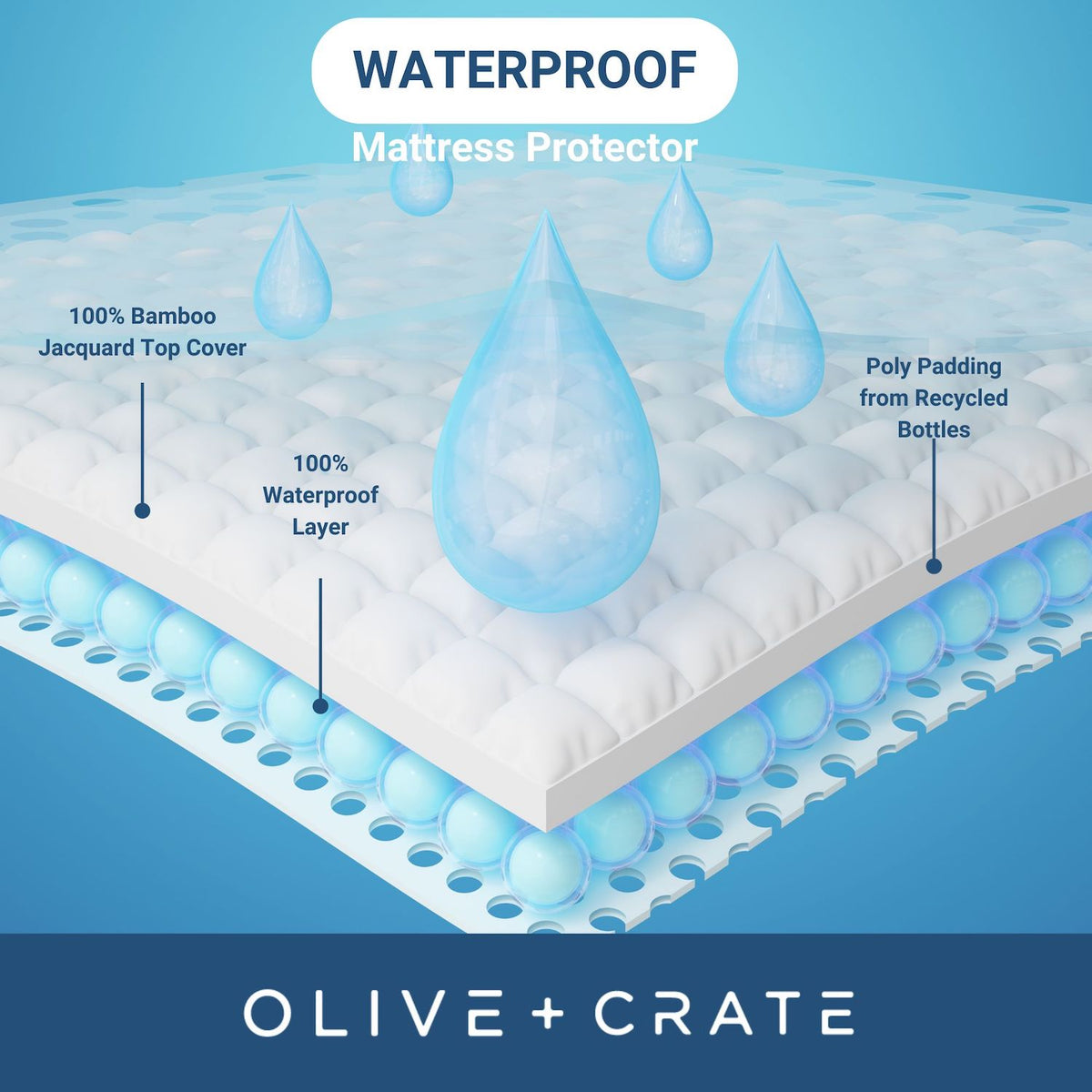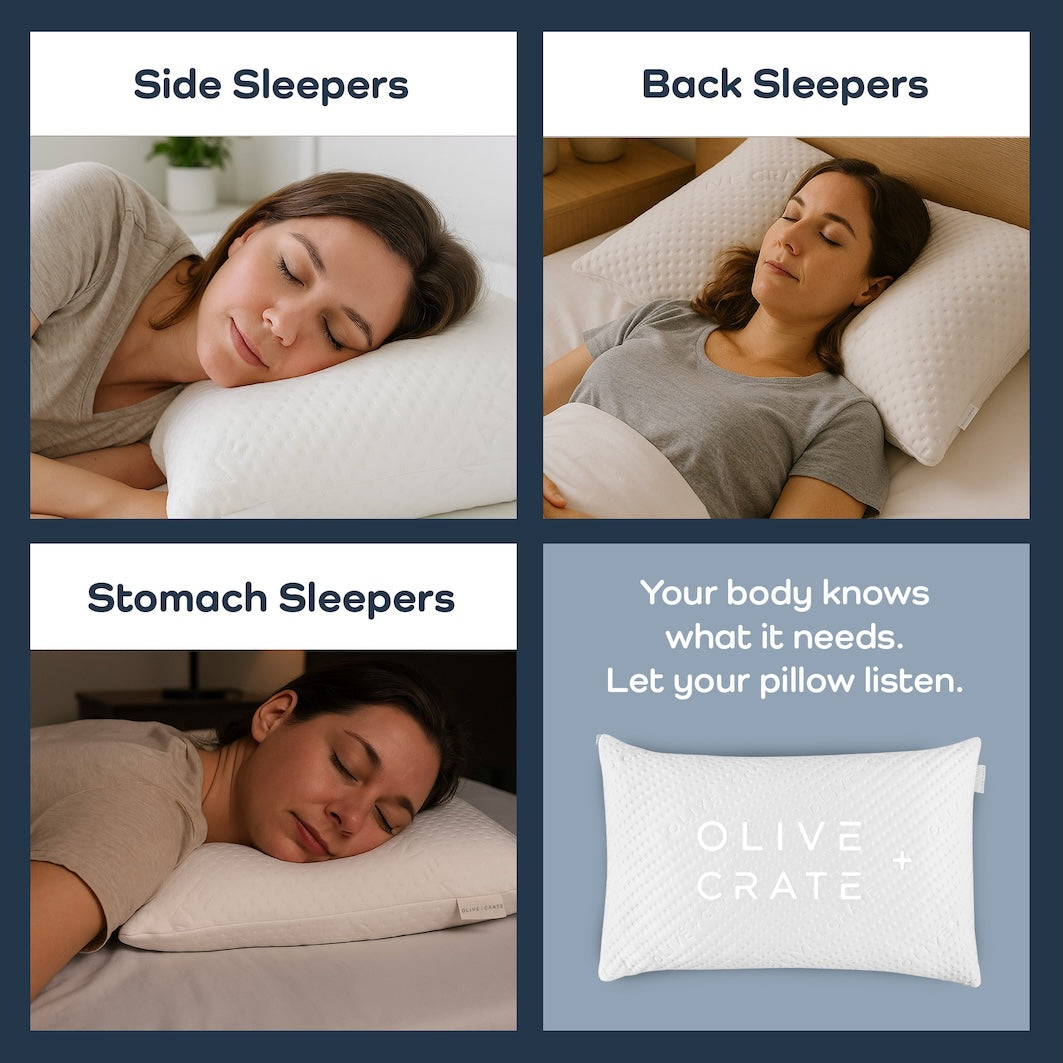Sleep is meant to restore, not irritate. If you’ve ever woken up with a stuffy nose, itchy eyes, or restless nights, allergens in your bedroom might be the hidden culprit.
That’s where hypoallergenic bedding steps in - a thoughtful, science-backed way to protect your sleep and soothe sensitive skin.
But what does hypoallergenic actually mean, and how do you know which sheets or protectors will really work? This guide will walk you through everything you need to know, from materials and maintenance to shopping strategies and real-world results.
What Does Hypoallergenic Mean?
Simply put, hypoallergenic bedding helps keep common irritants such as dust mites, mold, or pet dander out of your sleep space, giving people with allergies, asthma, or sensitive skin a calmer, more comfortable night’s rest.
Beyond the Label
Since brands can use the term loosely, your best defense is knowing what to look for:
-
Tightly woven fabrics with pore sizes smaller than 10 microns block dust mite allergens.
-
Smooth, breathable materials like silk or TENCEL™ reduce the buildup of dander and mold.
-
Independent certifications (such as OEKO-TEX® Standard 100) confirm safety for sensitive skin.
When in doubt, check whether the brand is transparent about testing data. Trustworthy companies will share results rather than relying on vague marketing claims.
Matching Materials to Your Allergy Triggers
Not all hypoallergenic bedding is equal. The best choice depends on your personal triggers, whether dust mites, pet dander, or mold are most problematic for you.
Is Cotton Hypoallergenic?
Yes—especially organic cotton woven tightly enough to act as a barrier. It’s breathable, gentle, and free of harsh chemicals, making it a safe choice for people with sensitive skin or eczema.
Is Bamboo Hypoallergenic?
Bamboo-derived fibers like TENCEL™ eucalyptus excel in humid environments. Naturally antimicrobial and moisture-wicking, they prevent mold growth while staying cool and breathable.
You can read more about this in the benefits of eucalyptus sheets for sensitive skin.
Is Satin Hypoallergenic?
Satin isn’t naturally hypoallergenic, but its smooth finish resists buildup of dander and pollen while feeling soothing against delicate or easily irritated skin.
Hypoallergenic Material Snapshot

-
Organic Cotton: Strong against dust mites, durable, softens with each wash.
-
Microfiber: Dense weave blocks allergens, though it can be less breathable.
-
Eucalyptus/TENCEL™: Smooth, eco-friendly, naturally antimicrobial.
-
Silk: Gentle and naturally resistant to mites and mold, but requires careful care.
-
Wool & Linen: Breathable, temperature-regulating, and excellent at wicking moisture.
How Should You Layer Your Bedding for Allergy Protection?
Think of your bed as a layered shield. Each piece, from mattress protector to pillowcases, contributes to reducing allergens in your sleep space.
1. Build Your Base with Protectors
A zippered mattress protector and pillow protectors are the foundation. They seal off dust mites already inside and block new ones from moving in.
Many sleepers prefer eco-friendly options, like this bamboo mattress protector, which combines durability with breathable comfort.
2. Add Comfort Layers: Sheets and Comforters
Once the protectors are in place, focus on sheets and duvets. Smooth, breathable fabrics help prevent allergens from sticking.
Some sleepers find relief with the PerfectSleep™ TENCEL bed sheet set, designed for cool comfort and gentle protection.
Others prefer adding PerfectSleep™ TENCEL pillowcases, which combine a silky touch with easy care.
3. Extend Protection Beyond the Bed
Remember: your bedroom environment matters too. Heavy drapes, thick carpets, or even letting pets share your pillow can reintroduce allergens.
Choose lighter, washable fabrics for window coverings, and keep up with regular cleaning to maintain a healthy space.
4 Common Mistakes That Sabotage Your Allergy Relief
Even with the best bedding, habits can undo your efforts:
-
Washing in cold water: Dust mites survive unless water is at least 130°F (60°C).
-
Using fragranced detergents: These introduce new irritants. Gentle, dye-free detergents are best.
-
Skipping protector washes: Protectors need monthly laundering too.
-
Letting bedding age too long: Worn-out protectors and pillows lose effectiveness.
Avoiding these small mistakes keeps your hypoallergenic system working at full strength.
Maintaining Peak Performance
Caring for hypoallergenic bedding ensures it continues to protect you night after night.
-
Weekly: Wash sheets and pillowcases in hot water.
-
Monthly: Launder mattress and pillow protectors.
-
Seasonal: Store off-season bedding in breathable cotton bags, not plastic.
-
As needed: Replace items when zippers break, pillows flatten, or allergy symptoms return.
Sensitive sleepers can also benefit from fabrics designed specifically for delicate skin—see this best sheets for sensitive skin complete comfort guide for more inspiration.
Frequently Asked Questions About Hypoallergenic Bedding
What material do dust mites hate?
Dust mites thrive in warm, humid environments with plenty of fabric pores to burrow into. They struggle to survive in tightly woven fabrics like long-staple cotton and in naturally resistant fibers like silk and eucalyptus, which create inhospitable surfaces.
What is the least itchy bedding?
Silk and eucalyptus bedding are among the least irritating options thanks to their smooth fibers. They don’t cling to skin, making them ideal for eczema or easily irritated complexions.
What is the best bedding for allergy sufferers?
The best bedding combines a tight weave with breathable, natural fibers that resist allergens. Organic cotton, eucalyptus TENCEL™, silk, and bamboo are excellent options because they reduce dust mite exposure and keep moisture under control.
How do I know if I'm allergic to my bedding?
Signs include waking up with a stuffy nose, itchy eyes, irritated skin, or worsening asthma at night. If your symptoms improve when you sleep away from home, it’s a strong clue that allergens in your bedding are the cause.
Are hypoallergenic sheets worth it?
Yes—when you choose the right material. Hypoallergenic sheets can cut down exposure to dust, dander, and mold, improving sleep quality for people with allergies, asthma, or sensitive skin. The key is looking for verified fabrics, not just marketing labels.
Key Takeaways for Your Allergy-Free Sleep Journey
-
Start with protectors: Your strongest line of defense against allergens.
-
Match fabrics to your triggers: Cotton for dust mites, eucalyptus for mold, silk for skin comfort.
-
Commit to routine care: Weekly hot washes and monthly protector care are essential.
-
Avoid common pitfalls: Say no to fabric softeners, cold water washes, and outdated bedding.
When you invest in the right bedding and care routine, you’re building more than a bed, you’re creating a sanctuary.
Ready to transform your sleep? Explore our TENCEL™ eucalyptus bedding collection and experience the soothing difference of bedding designed for both comfort and allergy relief.


